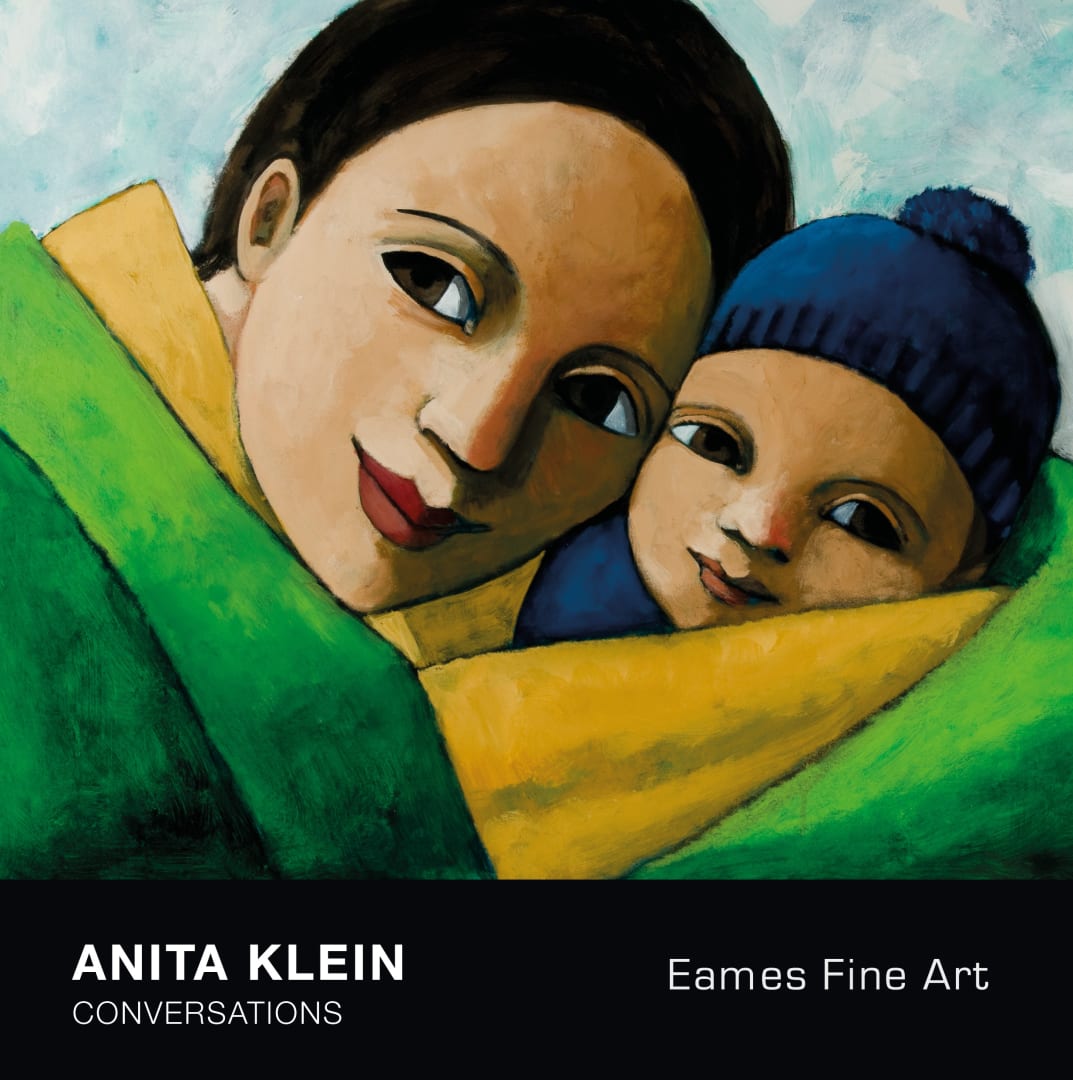Dimensions: 210 x 210 mm
Pages: 52
You can view the entire catalogue online here for free by clicking on view sample pages, but we would be delighted if you would like to purchase a hardcopy.
Introductory Essay
To ask an artist about the mediums that they use is to open up a flood of passionate enthusiasm and authentic opinion. To listen to Anita Klein speak about printmaking or painting is to hear in her voice an unadulterated joy for and knowledge of artistic processes. The medium—that is to say, the artist’s vehicle that brings their vision to life—is just as important as a subject matter or colour palette. Klein’s work in this exhibition—made with techniques ranging from drypoint, acrylic on canvas or paper, screen print, monotype, and linocut—shows us the impact that artistic mediums can have on our interpretation of the scene and the artist’s own connection to the work. This collection also shows Klein’s impressive virtuosity and her mastery of widely varied ways of working.
One of the modern artists that Klein admires most, Pablo Picasso, was a prolific printmaker as well as a world-famous painter and sculptor. He produced over 2,400 prints using diverse techniques: linocut, drypoint, etching, and lithography. A common misconception with printmaking is that the images created with these technologies are simply ‘copies’ of the ‘real’ painting. Like Klein, Picasso was an expert who showed that this is not the case; that printmaking is not just a reproduction technique but rather that mediums can be played with, can influence one another, and can make the artist’s process and oeuvre more vigorous and varied. Klein follows in the footsteps of him and other printmaking and painting giants like Rembrandt van Rijn and Francisco de Goya. An Eames Fine Art exhibition in the autumn of 2017 put together the work of these three artists, with Klein giving a compelling talk on their undeniable legacy in the printmaking world and their impact (particularly Picasso’s) on her own work.
She continues this great painter-printmaker tradition. The myriad possibilities of her striking compositions can be seen in her new Three Little Birds series. Monotype, linocut, acrylic on canvas, and acrylic on paper each lend something unique to the dynamic but harmonious scene of a woman gesturing towards the picturesque white birds swooping above her.
The most obvious differences among these four images are the assorted colour palettes. The monotype stands out most starkly, the black and white of the medium allowing for a calmer but almost ghostly feeling—as if the figure and the birds are emerging out of the inky blackness behind them. Then Klein has chosen green as the dominent palette in two of the works and pink in one. It would seem that the tone of the two green works would be similar, but the variations in the colours used are heightened by the disparate mediums of acrylic on canvas and linocut. The lime green of the acrylic work contrasts most dramatically with the birds, making them seem their purest and whitest. The swirling background lines of the linocut echo the dramatic movement of the flying animals. And the pinks of the acrylic on paper work radiate warmth and tenderness; even the bends in the figure’s elbows seem softer. Klein alters the mood of her compositions with her unparalleled skills as a colourist in every medium.
Each of these mediums requires a different set of physical movements. The linocut, as its name would suggest, commands the cutting of linoleum into shapes to then use for printing pigment onto paper. Acrylic is applied in the typical painterly manner of brush to its support, but canvas and paper each lend the paints distinctive textures and effects. The monotype is perhaps the most hands-on, and occasionally Klein will use her fingers to push around the ink upon the surface from which she prints. You can see this type of haptic artist’s mark in some of Picasso’s works as well, particularly his etching of wasps called La Guêpe, which includes one of his fingerprints and was in the gallery during the 2017 exhibition.
Like the lineage of painter-printmakers before her, Klein clearly interacts critically with her body of work, choosing mediums carefully while also leaving room to play with the effects that each one may have. This exhibition that places Klein’s working methods together is a revelation that informs us about her artistic process and her way of thinking about colour, line, and composition.
Christine Slobogin, March 2019

